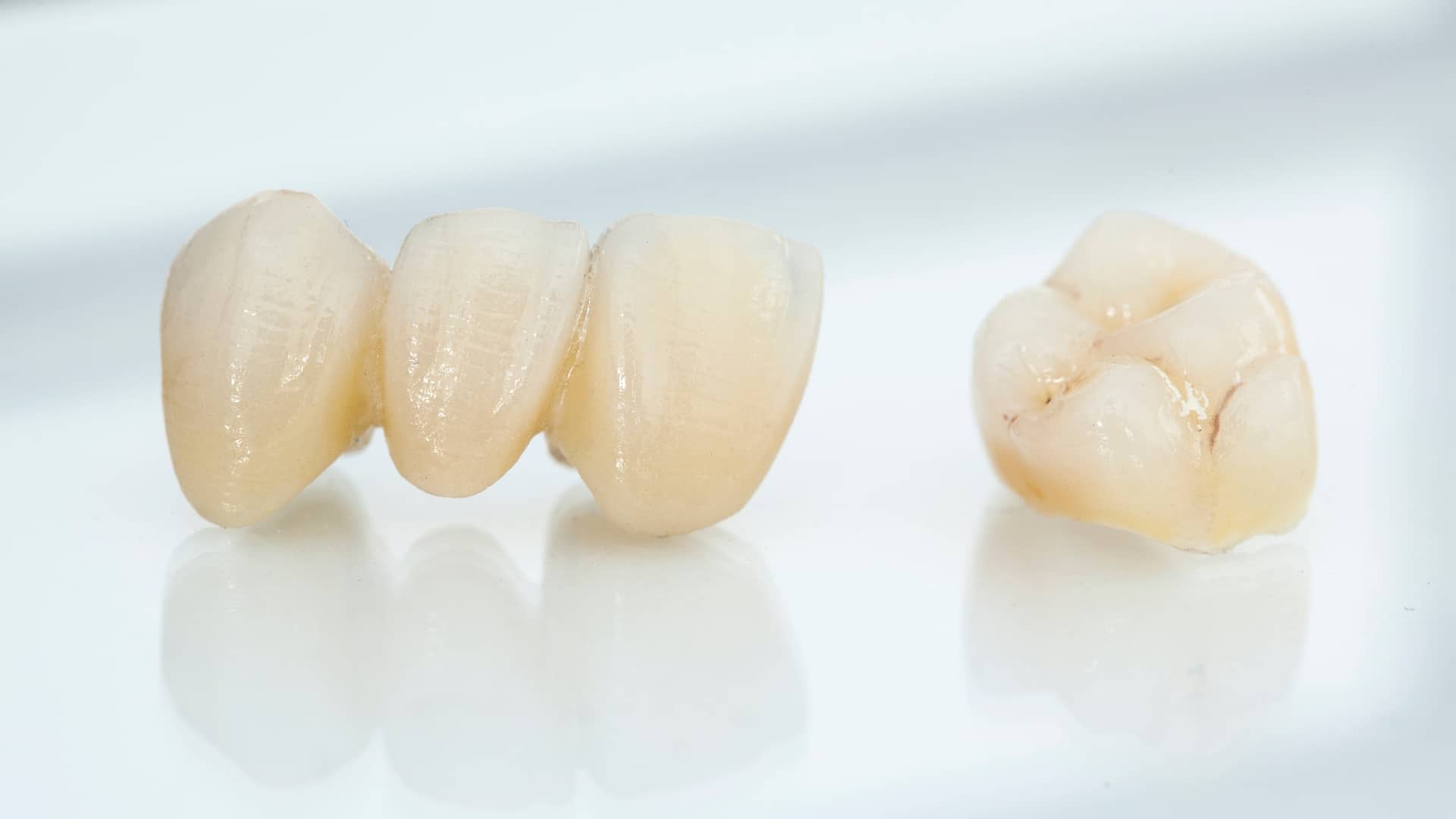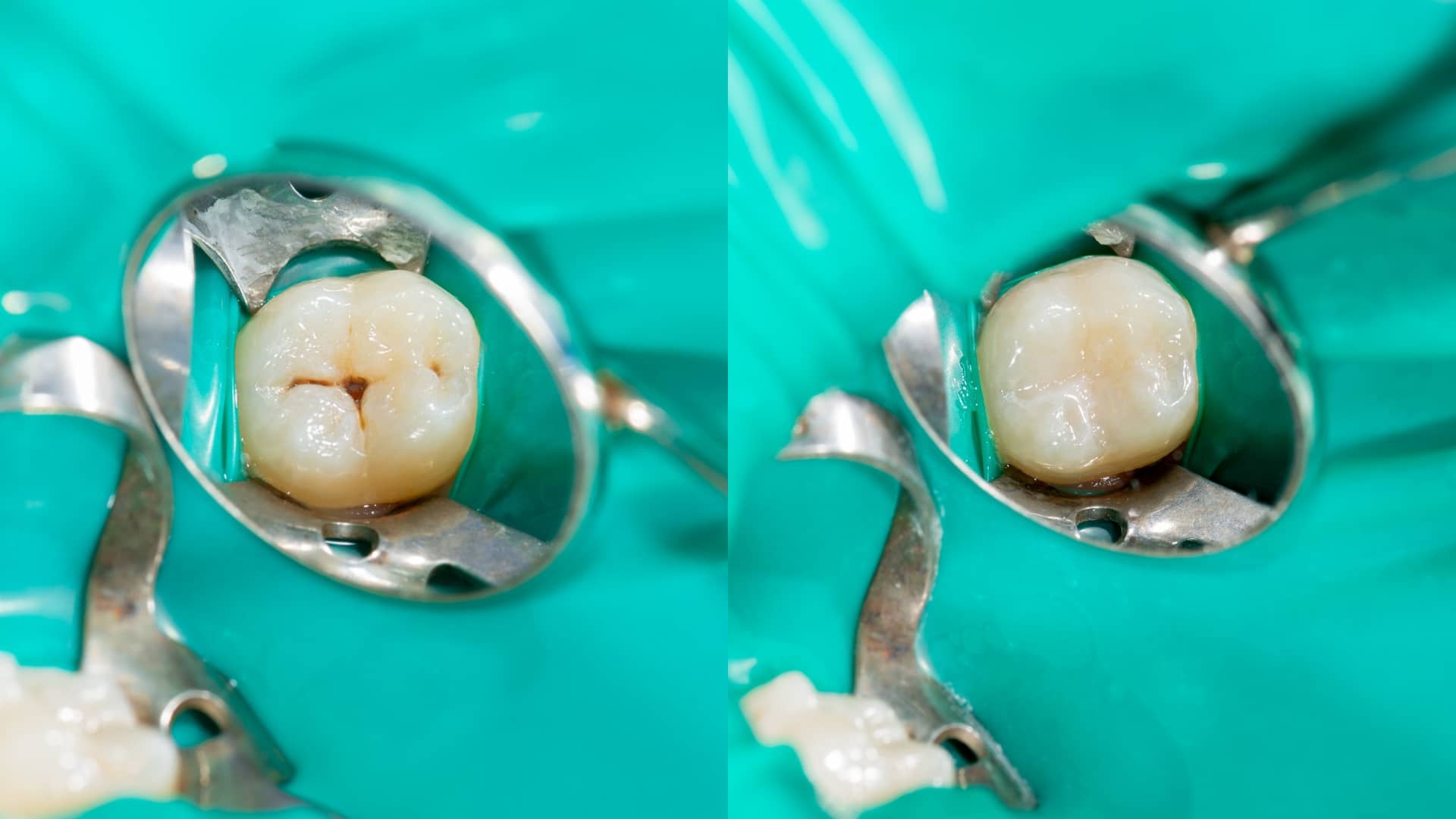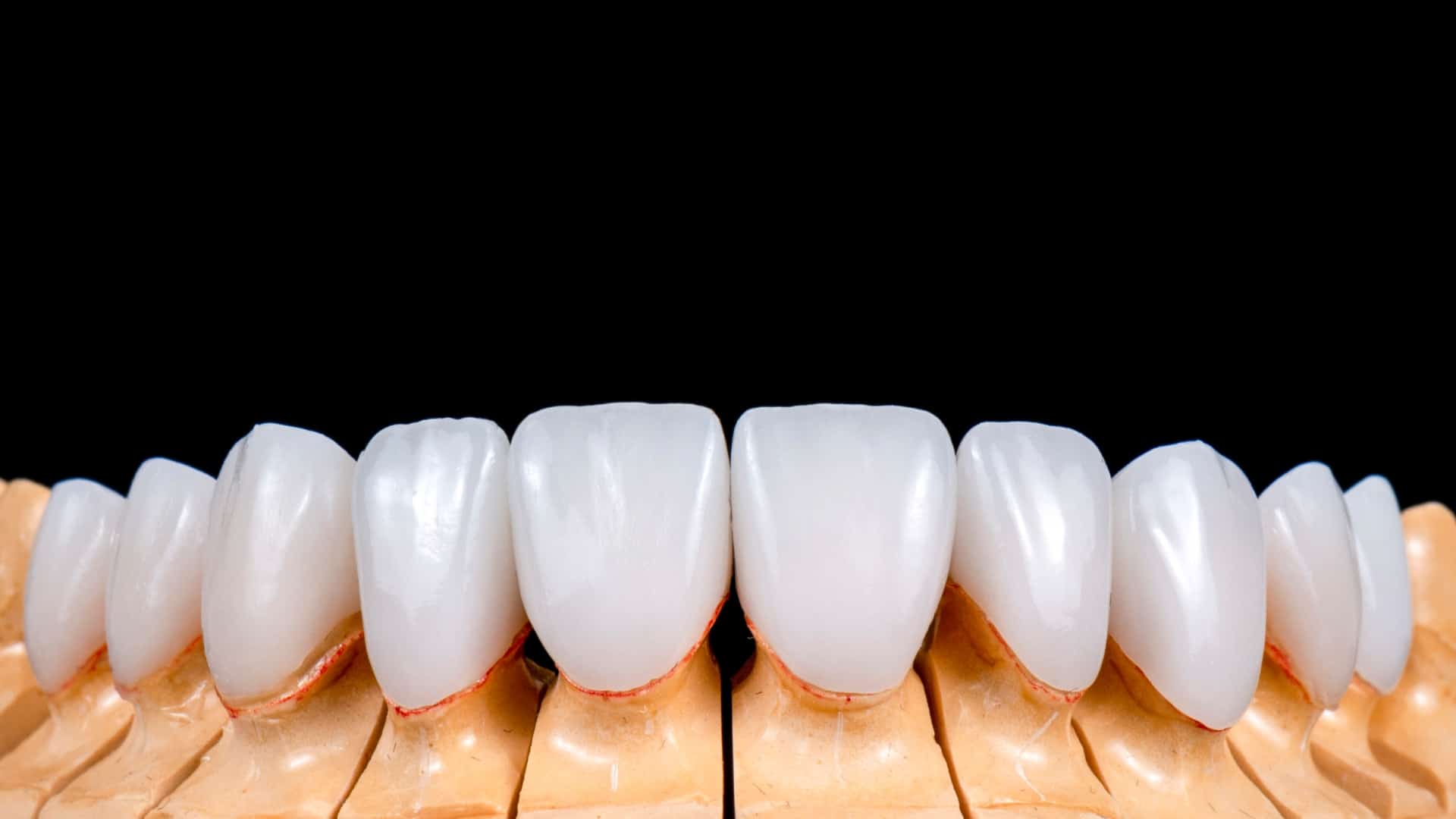
Dental care
Dental care Dental care refers to the maintenance and treatment of teeth and gums to prevent oral diseases and keep them in good health. This

Dental prosthetics are a type of dental restorations that completely covers the visible portion of a tooth, restoring its shape, size, strength, and appearance. They can be made of a variety of materials, including metal, ceramic, and composite resin.
A dental crown and a dental bridge are both types of dental restorations that are used to replace missing or damaged teeth, but they differ in how they are used and how they are anchored in the mouth.
A dental crown is a restoration that completely covers a damaged tooth, restoring its shape, size, strength, and appearance. It is typically used to restore a single tooth that has been broken, worn, or otherwise damaged. A crown can also be used to protect and support a tooth with a large filling or a dental implant.
A dental bridge, on the other hand, is used to replace one or more missing teeth. A bridge typically consists of two or more crowns, with one or more false teeth (called pontics) in between. The crowns on either end of the bridge are placed on the teeth next to the gap, and the pontics fill the space of the missing teeth. The false teeth are anchored to the crowns, which are anchored to the natural teeth.
In summary, a crown is a single restoration that covers a single damaged tooth, while a bridge is a multiple restoration that replaces one or more missing teeth by attaching an artificial teeth to the natural teeth on either side of the gap.
There are several different types of materials that can be used to make dental crowns and bridges, including:
Zirconia crowns and bridges are a type of dental crown made entirely of zirconia, a type of ceramic that is strong, durable, and tooth-colored. They are an excellent alternative to traditional metal or porcelain-fused-to-metal crowns and bridges.
One of the main benefits of zirconia crowns and bridges is their strength and durability. Zirconia is a very hard and strong material, making it an ideal choice for restoring back teeth. The material is also highly resistant to wear and tear, which means that zirconia crowns can last for many years with proper care and maintenance.
Another benefit of zirconia crowns and bridges is their esthetic appeal. Zirconia is a tooth-colored material, which means that they can blend in seamlessly with the rest of your teeth. This makes them a great option for restoring front teeth, as well as back teeth.
Additionally, they are biocompatible, which means that they are well tolerated by the body, and they don’t cause any allergic reactions.
Overall, zirconia crowns and bridges are an excellent option for restoring teeth that are broken, worn, or otherwise damaged. They offer a great balance of strength, durability, and esthetics.
All-ceramic or all-porcelain crowns are a type of dental crown or bridge made entirely of ceramic or porcelain material, which is tooth-colored. They are an excellent alternative to traditional metal or porcelain-fused-to-metal crowns and bridges.
One of the main benefits of all-ceramic crowns and bridges is their esthetic appeal. They are highly tooth-colored, which means that they can blend in seamlessly with the rest of your teeth. This makes them a great option for restoring front teeth, as well as teeth that are visible when the person smiles or talks.
Another benefit is that they are biocompatible, which means that they are well tolerated by the body and they don’t cause any allergic reactions. This makes them a suitable option for patients with metal allergies.
All-ceramic crowns are also highly durable, with some high-quality ceramic materials can be as durable as metal crowns. However, All-ceramic crowns are not as strong as metal or PFM crowns and bridges, and they are more prone to fracture. They also require more precise preparation and placement than metal or PFM crowns, as the ceramic material cannot tolerate as much tooth reduction. Therefore, they are not suitable for restoring back teeth or molars.
Overall, all-ceramic crowns and bridges are a great option for restoring front teeth that are damaged or discolored, as they can provide a highly esthetic and natural-looking restoration. They are also a good option for patients with metal allergies.
Porcelain-fused-to-metal (PFM) crowns are a type of dental crown that are made by fusing a layer of porcelain to a metal substructure. They are similar to metal crowns in terms of strength and durability, but they are more tooth-colored, making them a better option for restoring front teeth.
The main benefit of PFM crowns is that they combine the strengths of both metal and porcelain. The metal substructure provides strength and support to the crown, while the porcelain layer provides the esthetic appeal of a natural-looking tooth. PFM crowns can be shaded to match the color of the adjacent teeth, providing a more natural-looking restoration.
PFM crowns are also highly durable, as they can withstand the forces generated by biting and chewing, which makes them suitable for restoring back teeth as well.
However, PFM crowns have some limitations. The porcelain layer can chip or break and the metal substructure can show through at the gum line, which can be visible when the person smiles or talks. Additionally, the metal substructure can cause allergic reactions in some patients.
In summary, PFM crowns are a popular option for restoring front teeth as they provide a good balance of strength, durability, and esthetics. They are also suitable for restoring back teeth, but they have some limitations that should be taken into consideration. Your dentist will advise you on the best option for your specific case.
There are several reasons why a dentist might recommend a dental crown or bridge, including:
A crown can be used to restore a tooth that has been damaged by decay, trauma, or wear and tear, by completely covering the visible portion of the tooth. A bridge can be used to replace one or more missing teeth, by attaching artificial teeth (called pontics) to the natural teeth on either side of the gap.
A crown can be used to protect a tooth that is weak or at risk of breaking. For example, a tooth that has a large filling or has had root canal treatment may be at risk of breaking, and a crown can be used to provide additional support and protection.
A crown or bridge can be used to improve the appearance of a tooth that is discolored, misshapen, or otherwise cosmetically unappealing.
A crown or bridge can be used to correct a bite problem, such as a bite that is uneven or a misaligned jaw.
A bridge can be used as a permanent replacement for a removable dental appliance such as a partial denture.
A dental implant is an artificial tooth root, usually made of titanium that is surgically placed in the jawbone. A crown can be placed on top of the implant to provide the appearance and function of a natural tooth.
In summary, a dental crown or bridge can be used to restore a damaged or decayed tooth, protect a weak tooth, improve the appearance of a tooth, correct a bite problem, replace a removable dental appliance, or hold a dental implant in place. The specific reason for placing a crown or bridge will depend on the condition of the tooth and the overall goals of treatment.
A dental crown visit typically involves two appointments. The first appointment is called the preparation appointment, and it is dedicated to preparing the tooth and taking impressions. The second appointment is called the cementation appointment, and it is dedicated to placing the permanent crown.
During the preparation appointment, your dentist will first examine your tooth to determine if a crown is the best option for restoring it. If a crown is the appropriate treatment, your dentist will then numb the tooth and surrounding area with a local anesthetic. Next, the dentist will remove any decay or damage from the tooth and shape the remaining tooth structure to make room for the crown. Then, the dentist will take an impression of the prepared tooth, as well as the opposing and adjacent teeth, to create a model for the custom crown. The impression will be sent to a dental laboratory, where the crown will be custom-made to fit your tooth.
During the placement appointment, which is typically scheduled 7-10 days after the preparation appointment, the dentist will remove the temporary crown (if one was placed) and check the fit and color of the permanent crown. If everything looks good, the dentist will clean, polish and etch the tooth, then place a dental adhesive on the tooth and seat the crown in place. The dentist will then adjust the bite and check the occlusion (the way the upper and lower teeth come together) and make any necessary adjustments.
It’s worth noting that the specific steps and procedures may vary depending on the dentist, the type of crown, and the condition of the tooth being restored.
After the placement of the crown, the dentist will give you instructions on how to care for your tooth and the crown, including avoiding hard and sticky foods, and how often to schedule follow-up appointments.
In summary, getting a dental crown typically involves two appointments. The first appointment is dedicated to preparing the tooth and taking impressions, and the second appointment is dedicated to placing the permanent crown.

Dental care Dental care refers to the maintenance and treatment of teeth and gums to prevent oral diseases and keep them in good health. This

Paediatric dental care Primary teeth, also known as baby teeth, play an important role in a child’s overall health and development. They help children learn

Dental fillings Cosmetic dental fillings refer to fillings that are used to improve the appearance of teeth, in addition to restoring function and preventing further

Veneers Dental veneers are thin, custom-made shells that are designed to cover the front surface of teeth. They are typically made of porcelain or composite

Root canal treatment Root canal treatment is a dental procedure that is used to repair and save a tooth that is infected or damaged. It
For further information and to book your appointment
Al Itqan Dental Clinic © 2024. All rights reserved